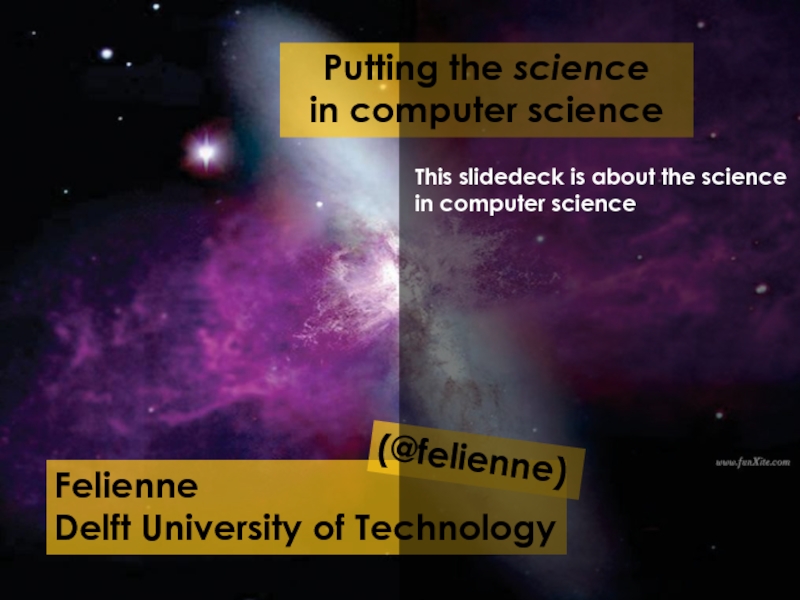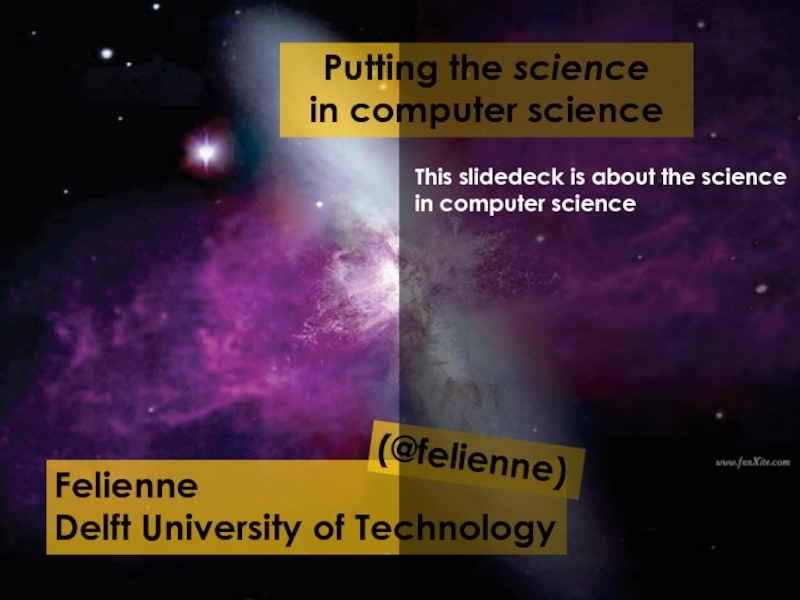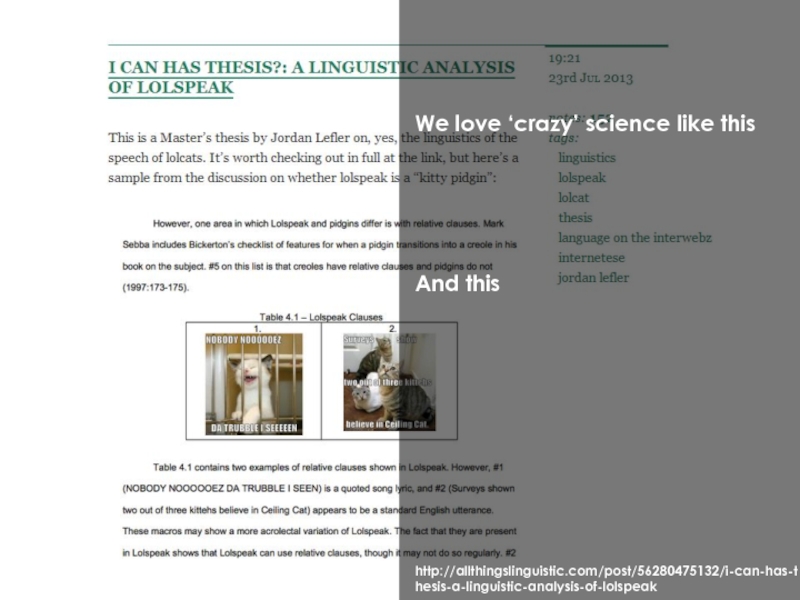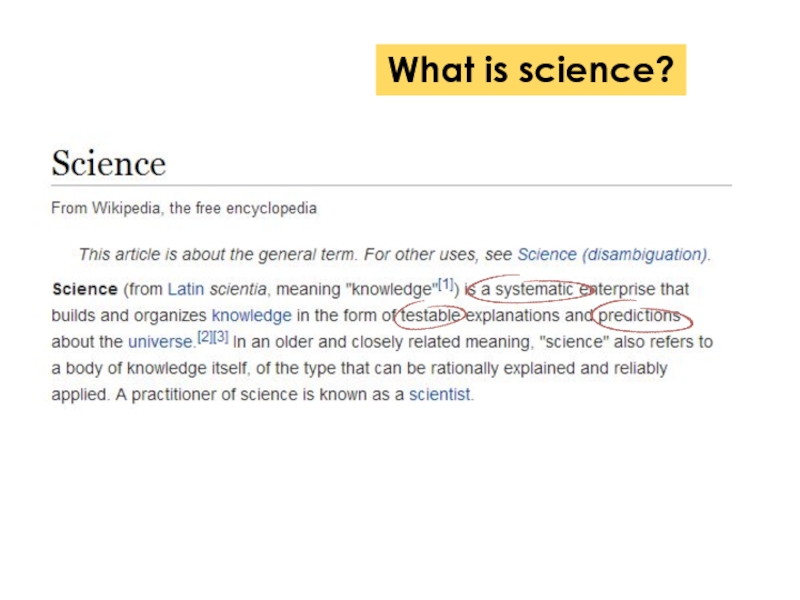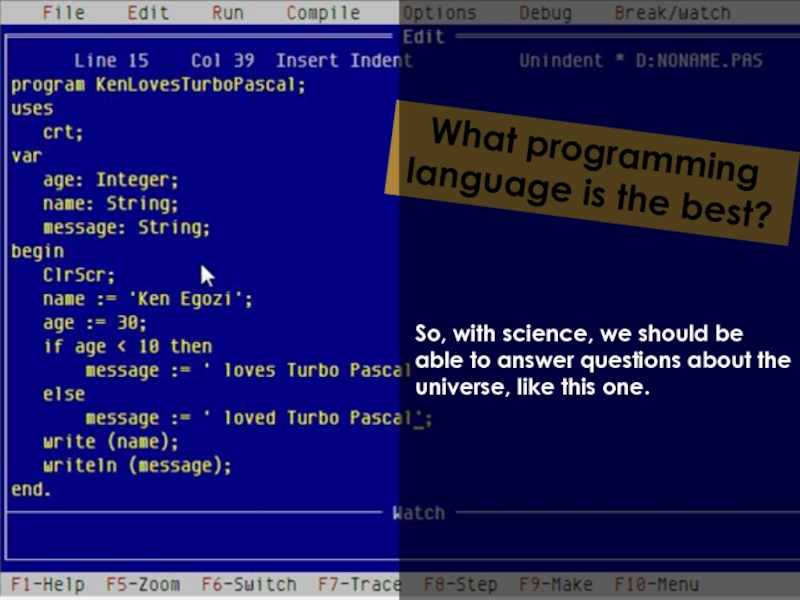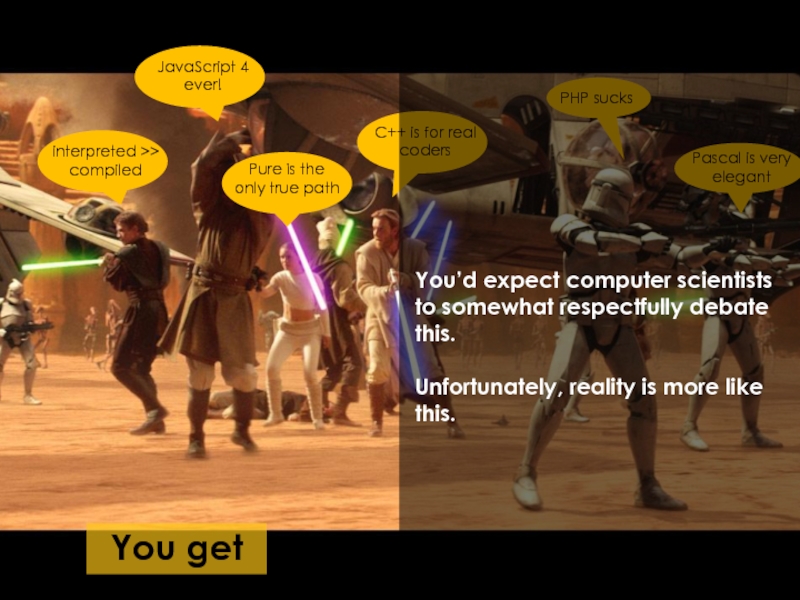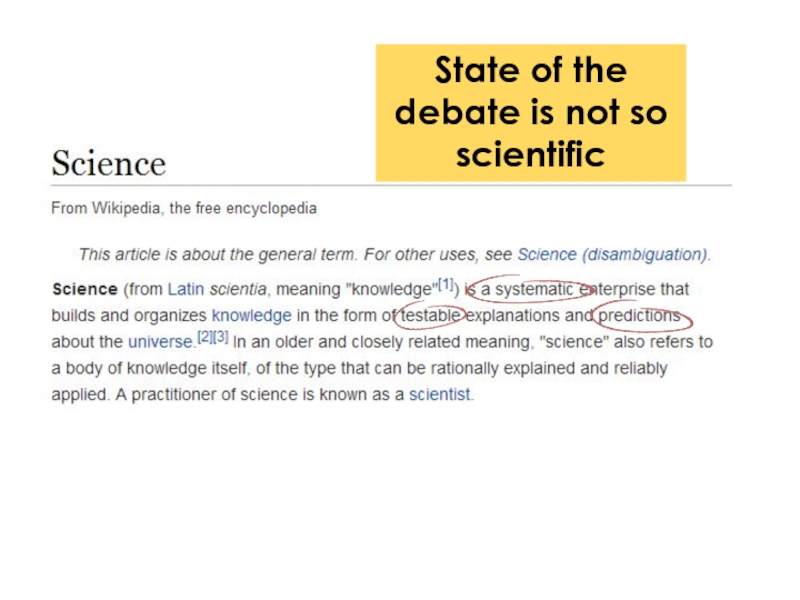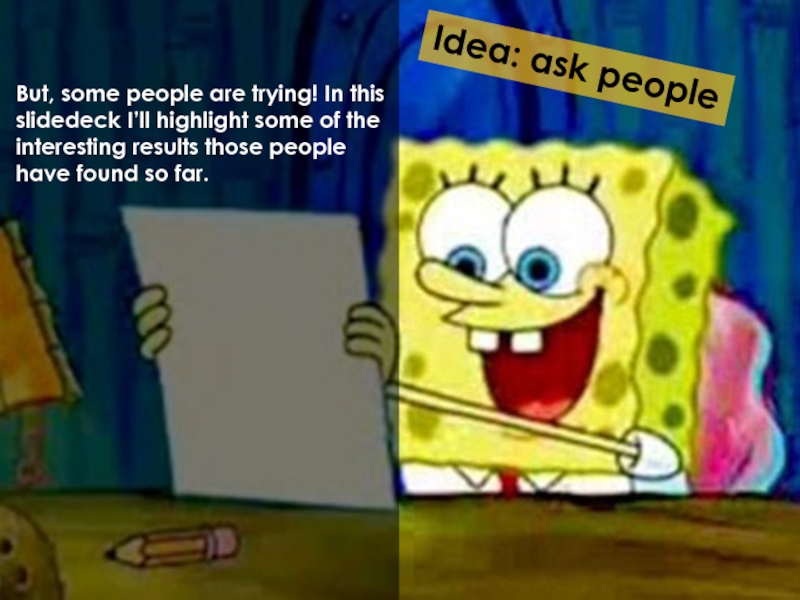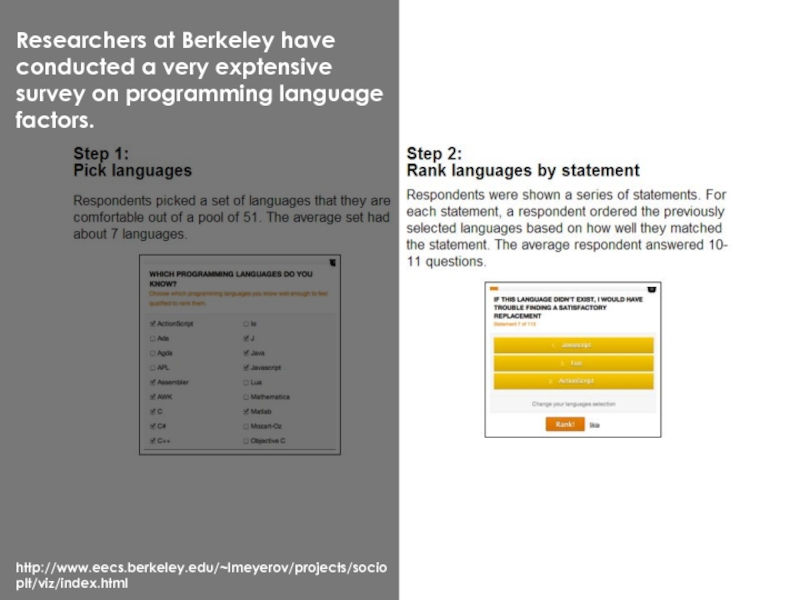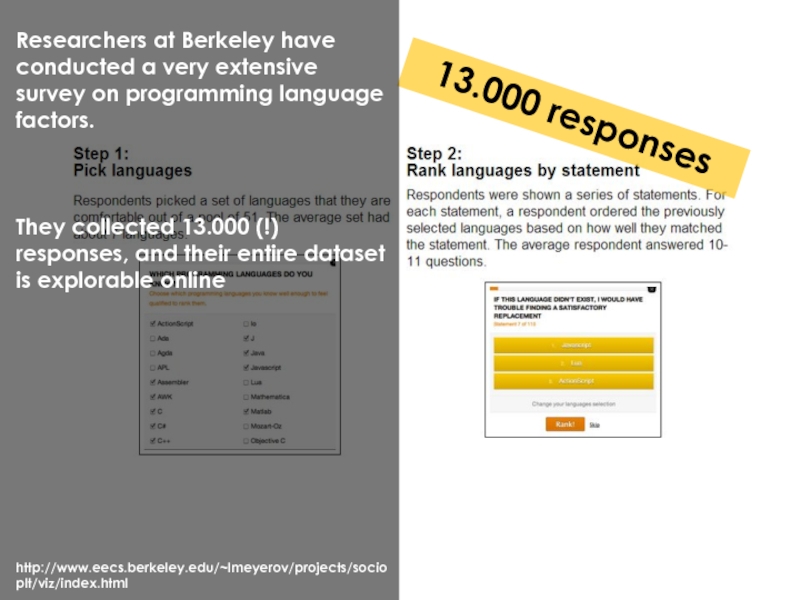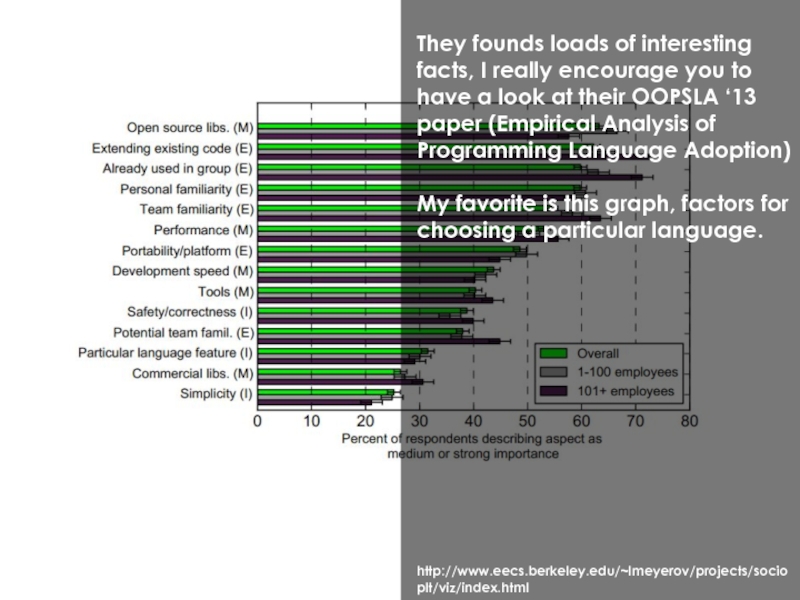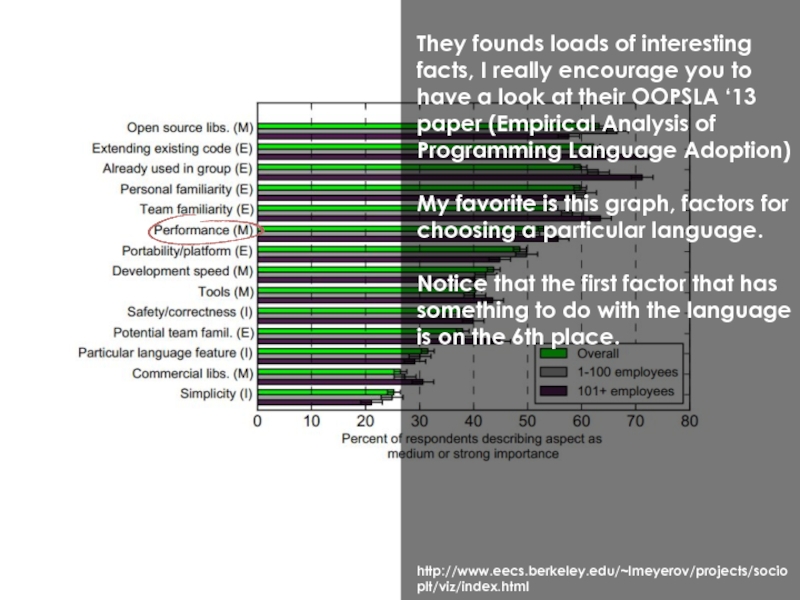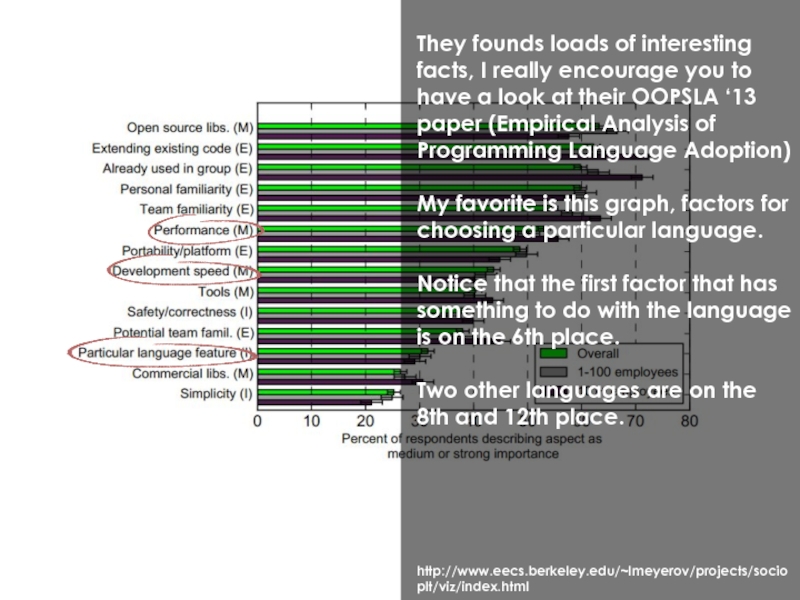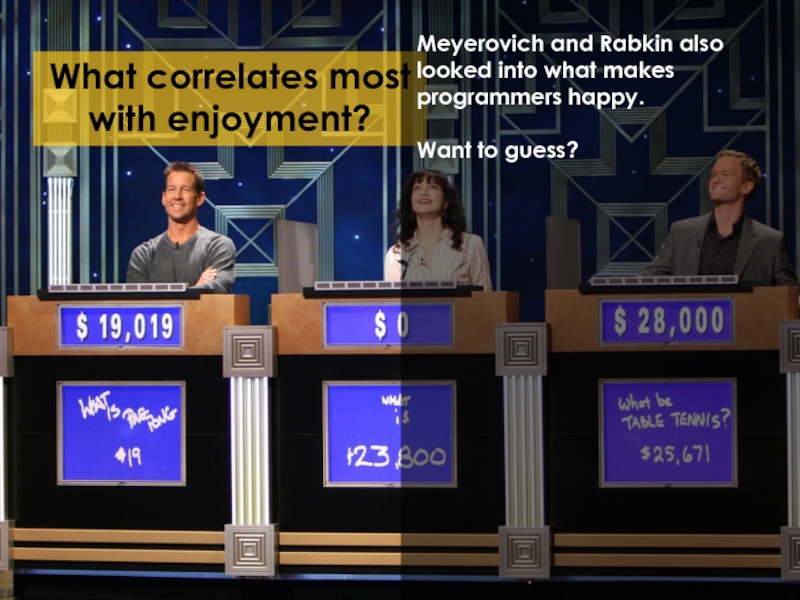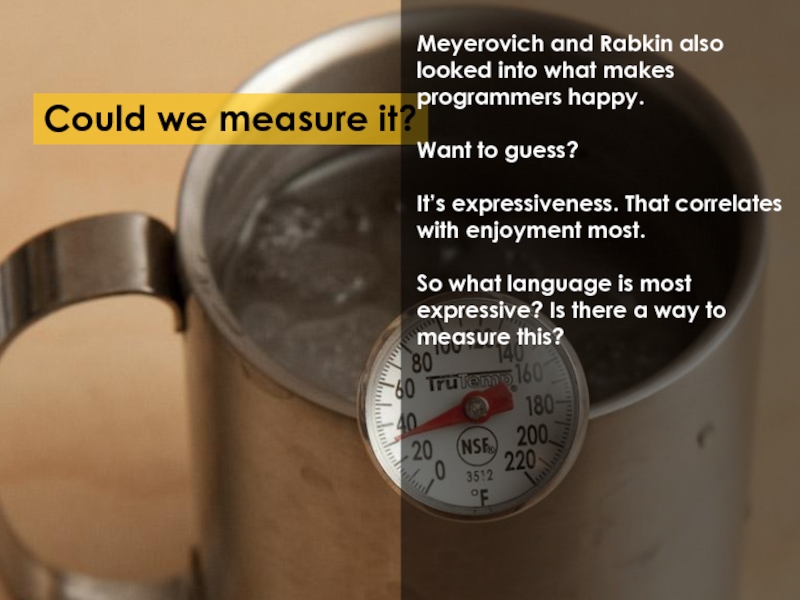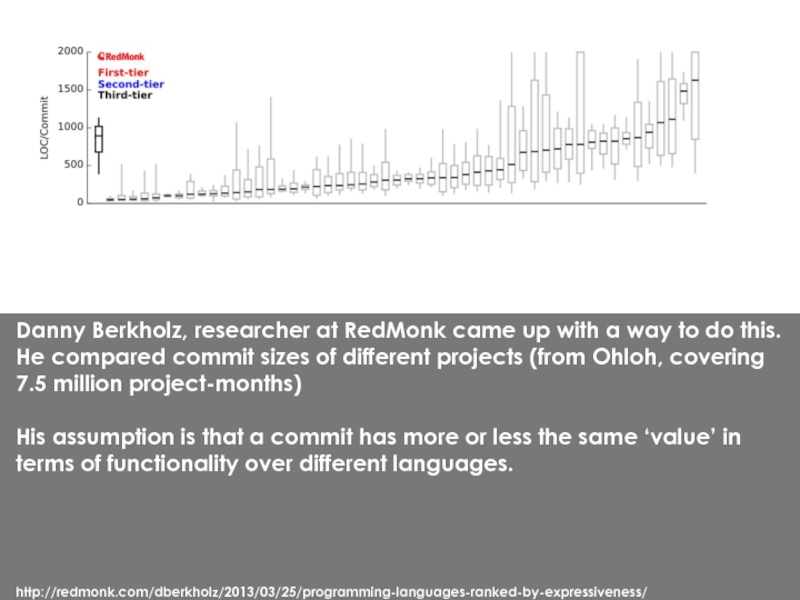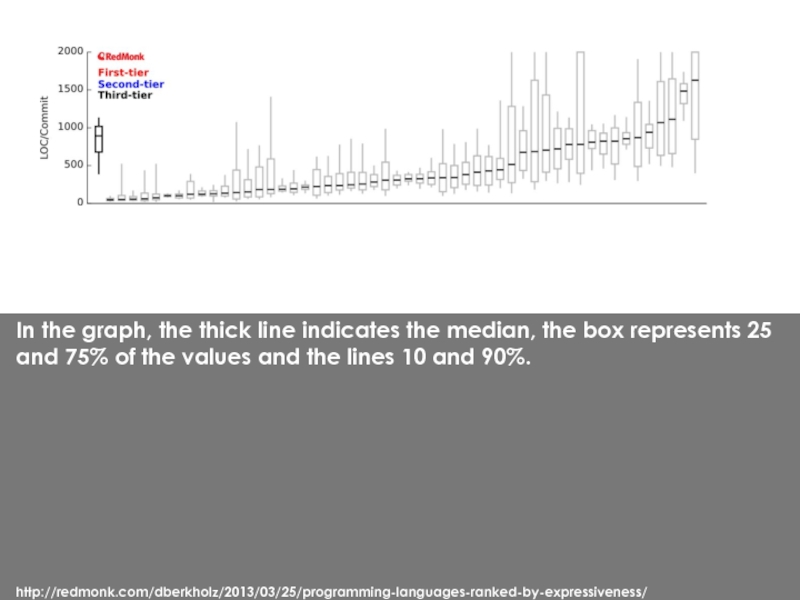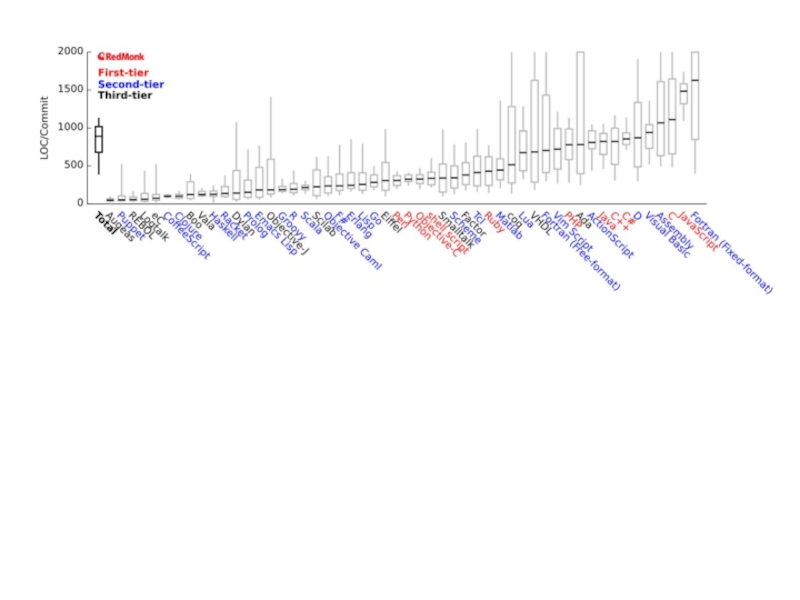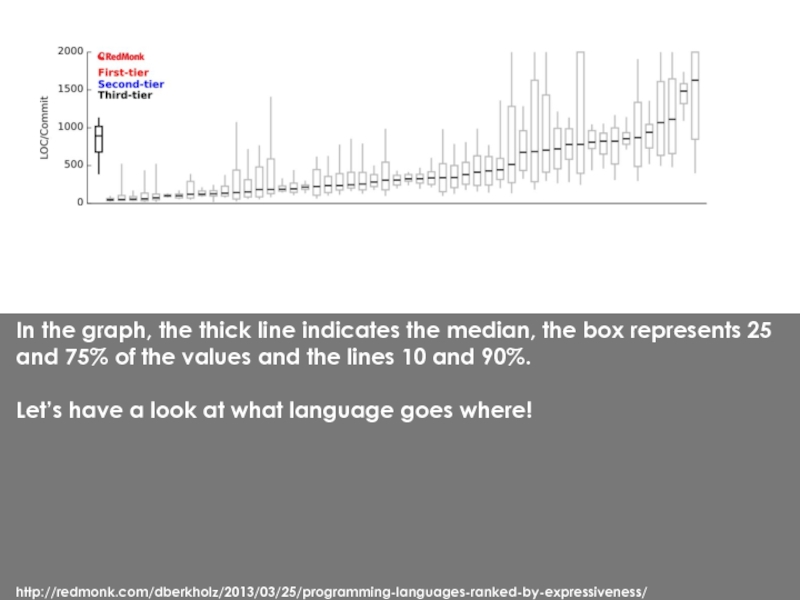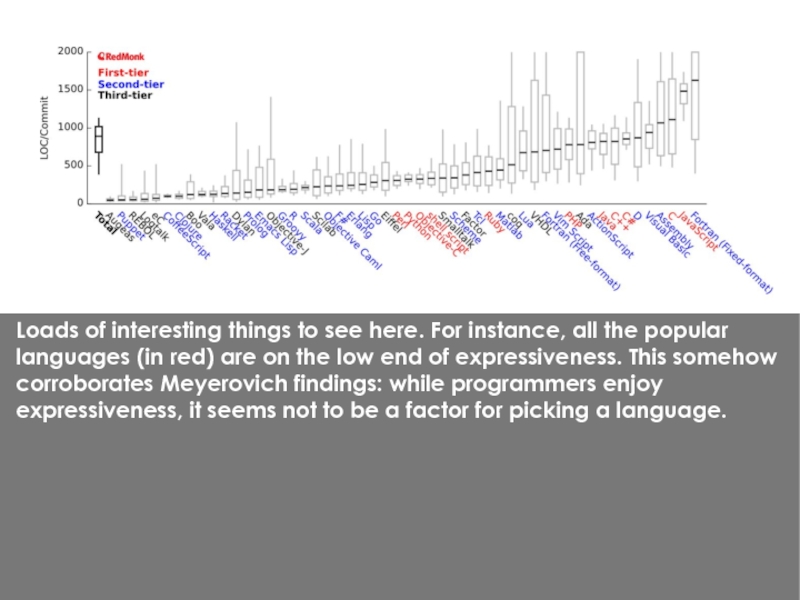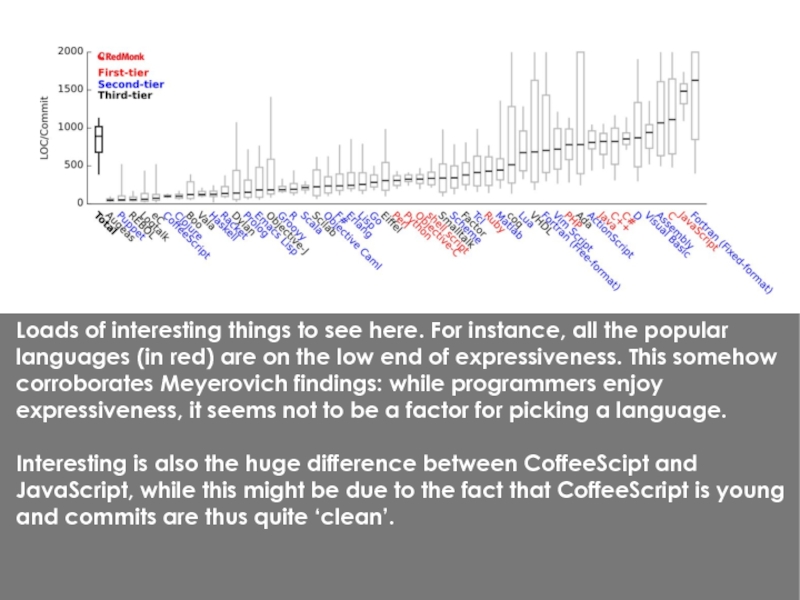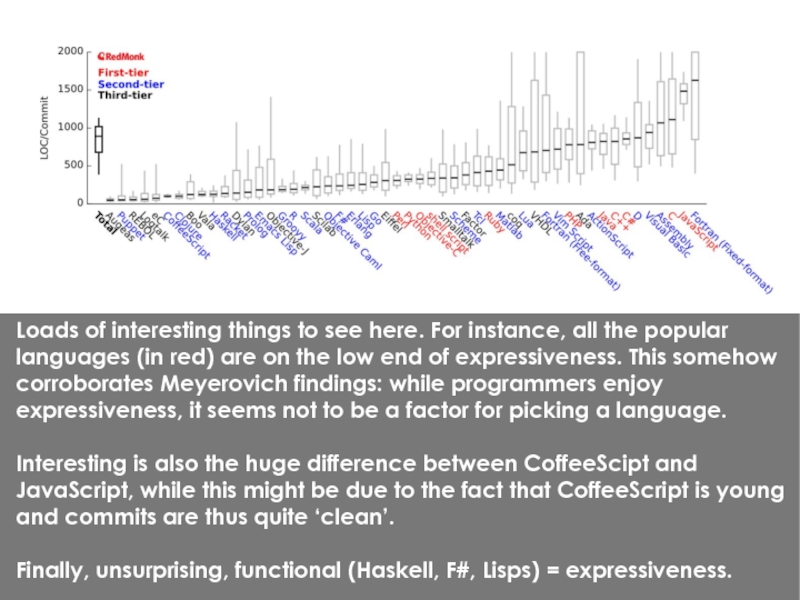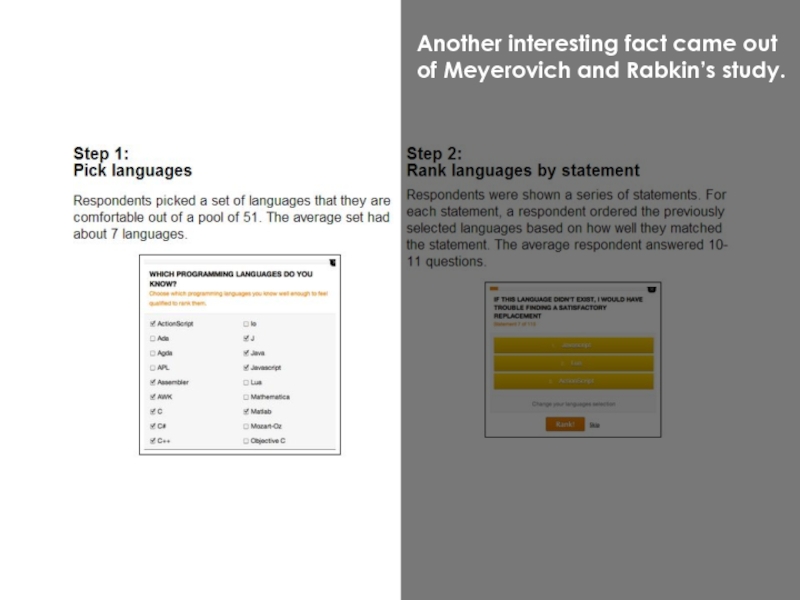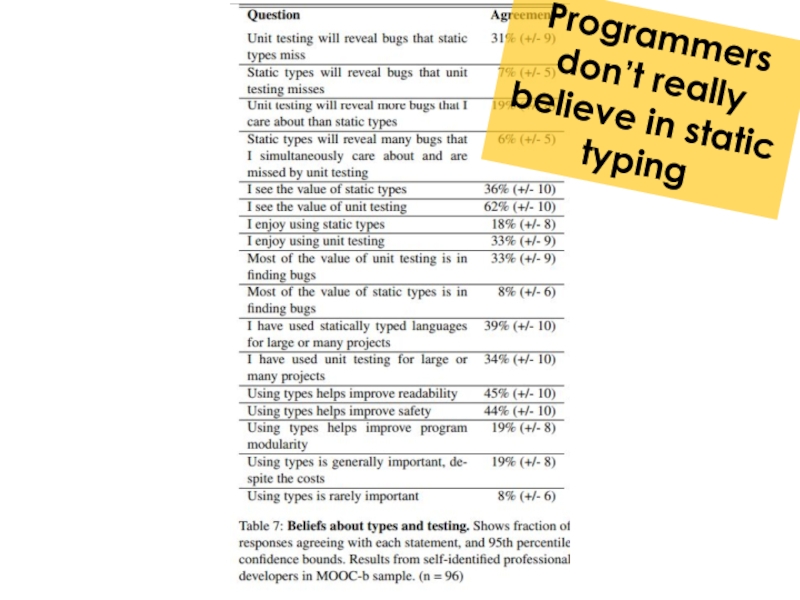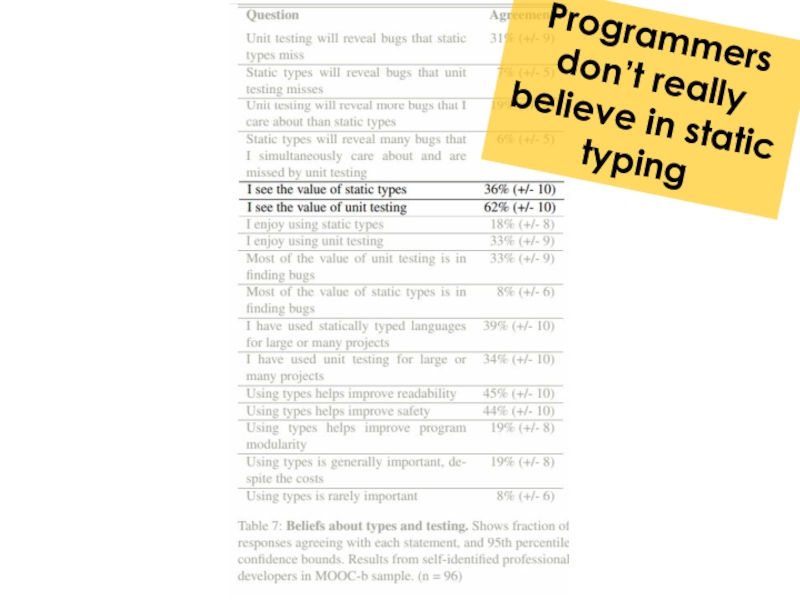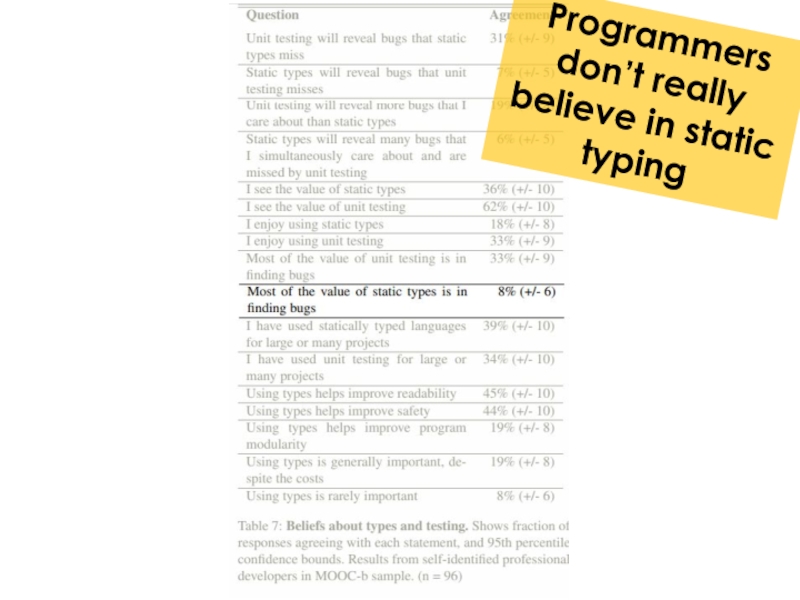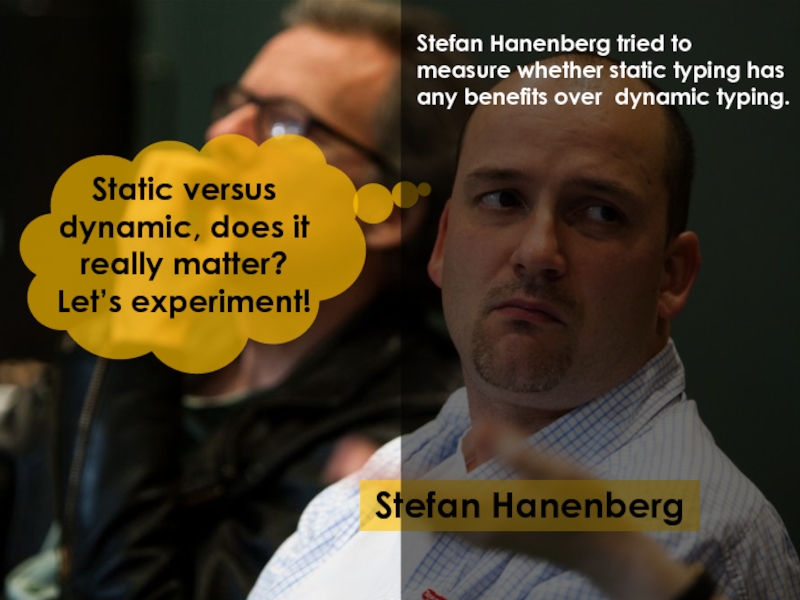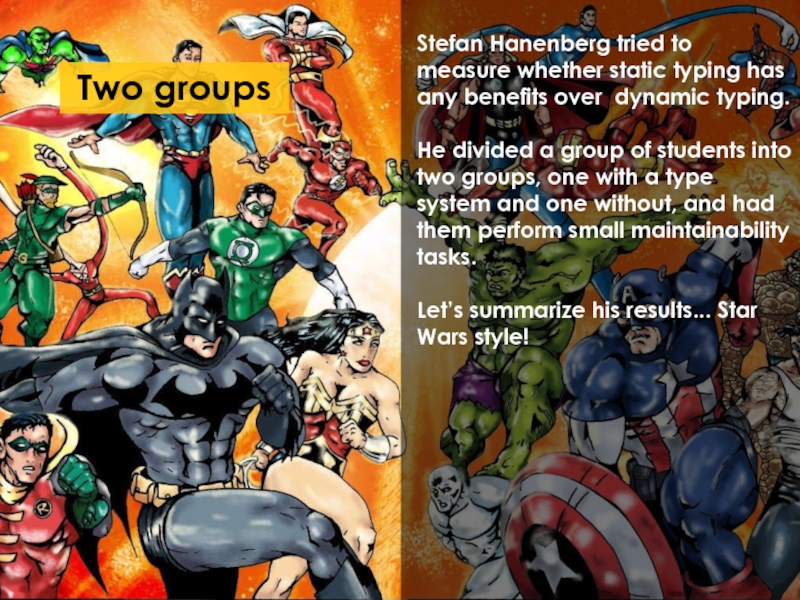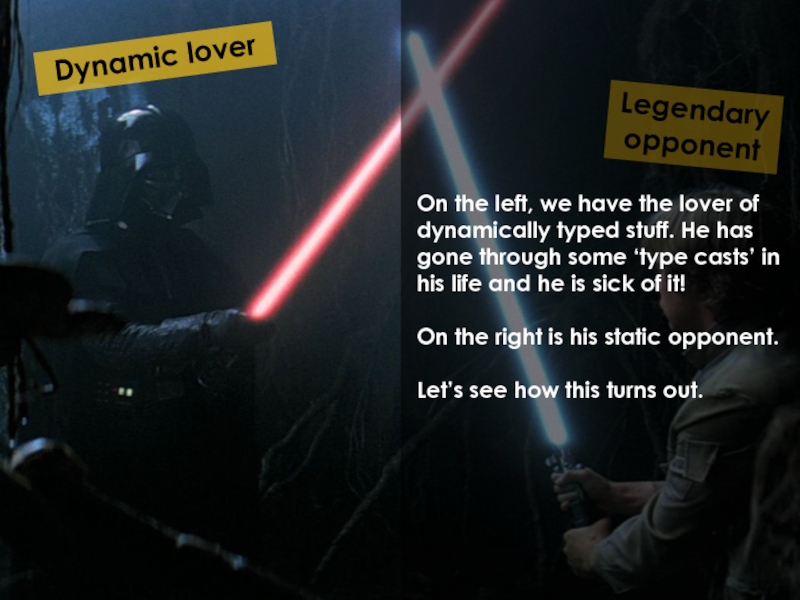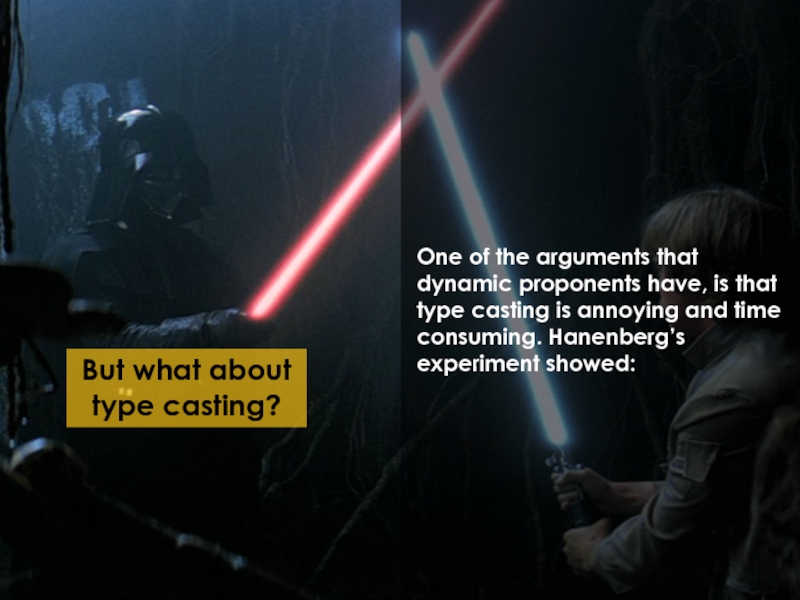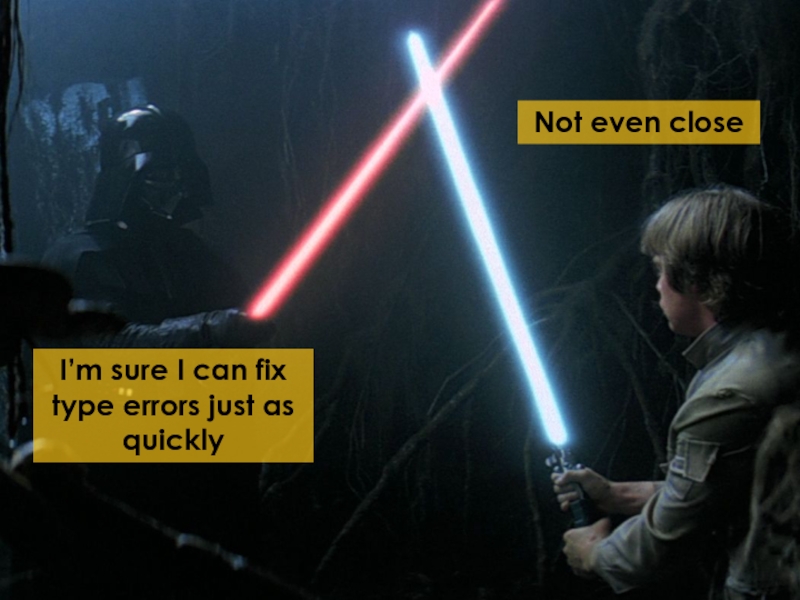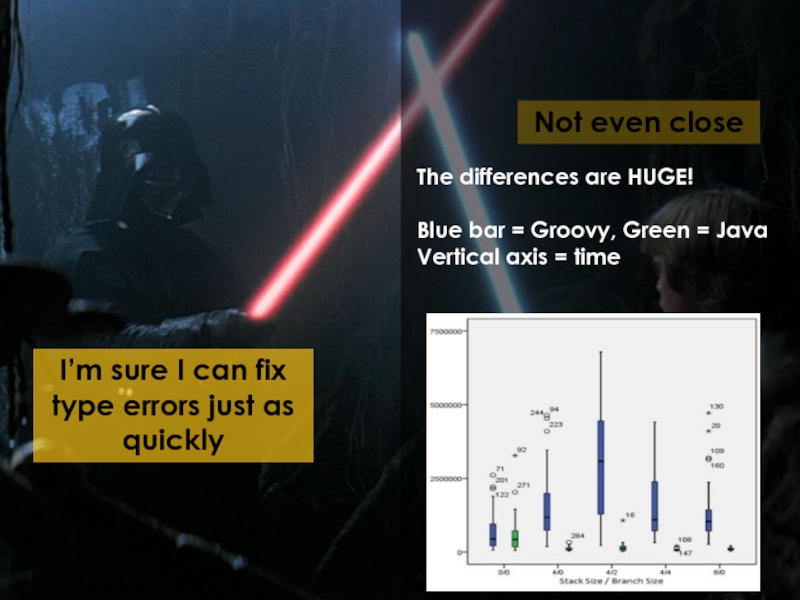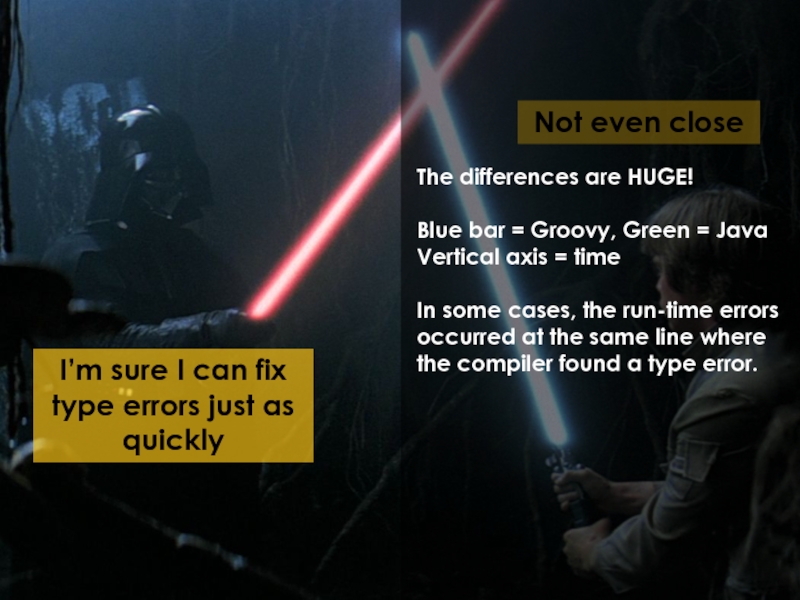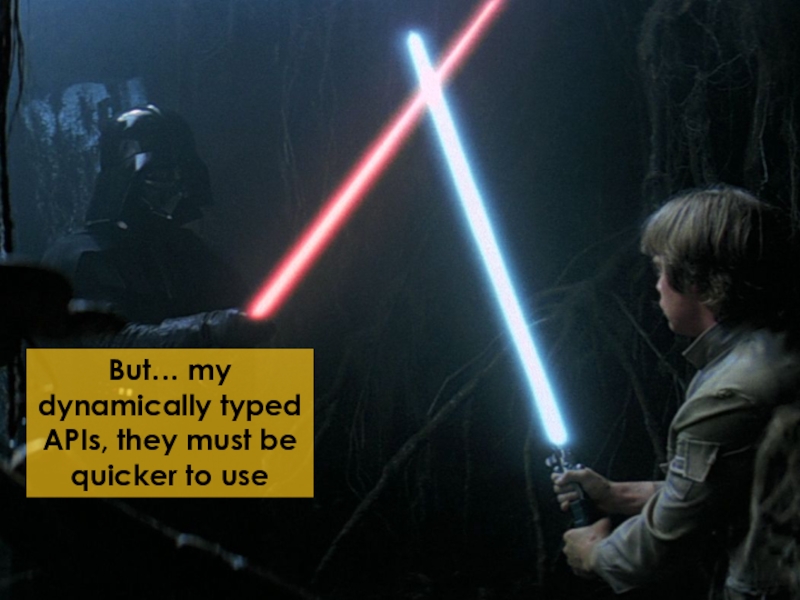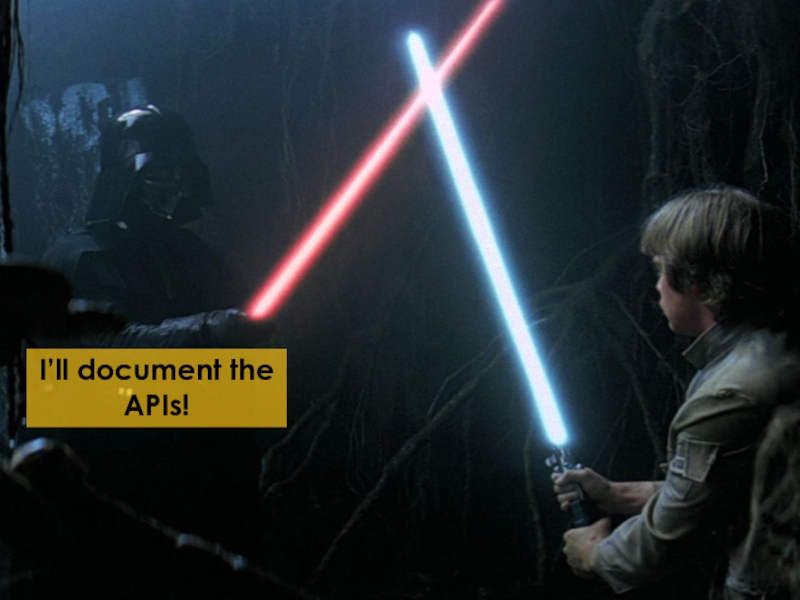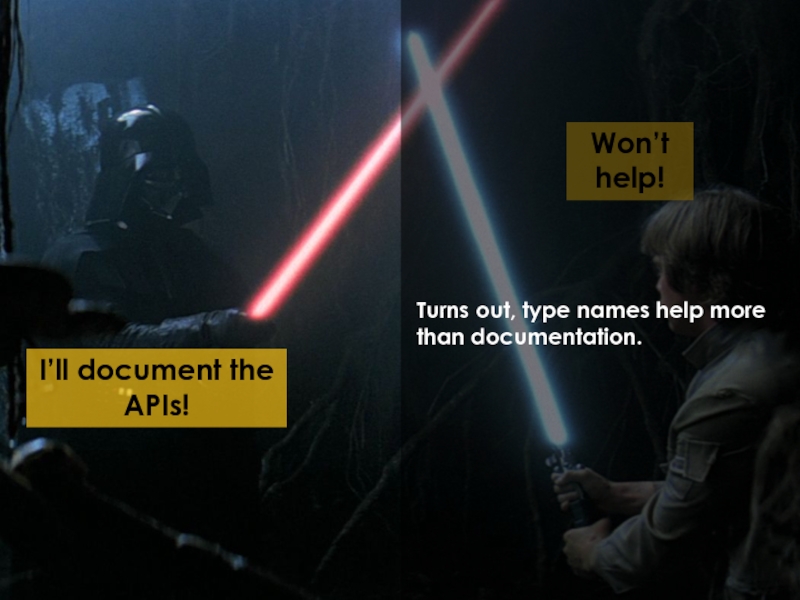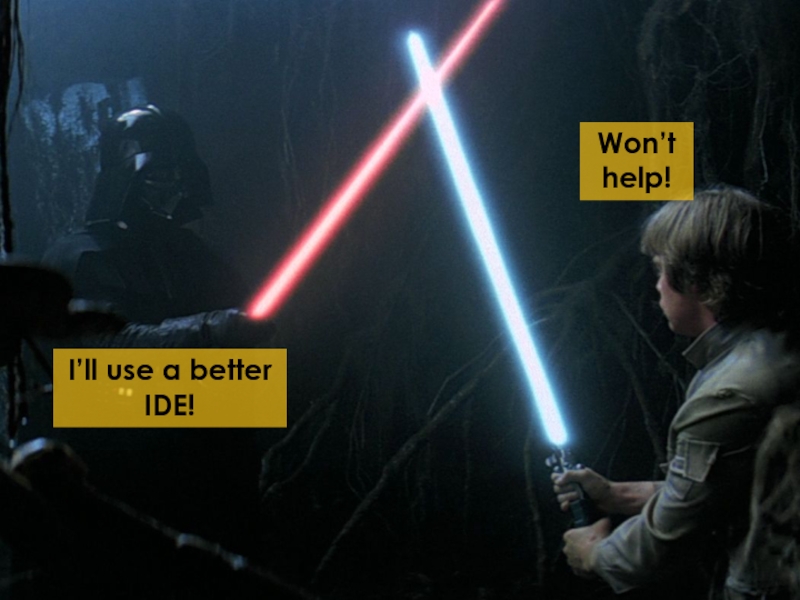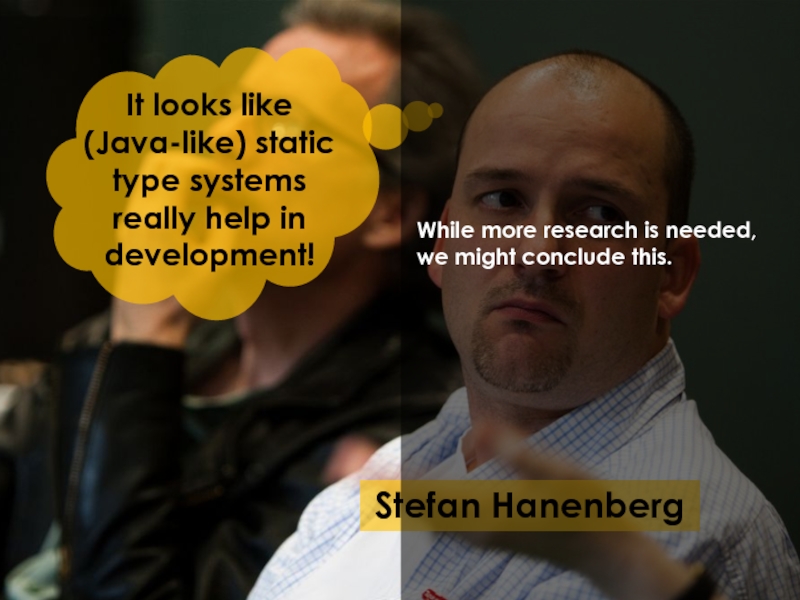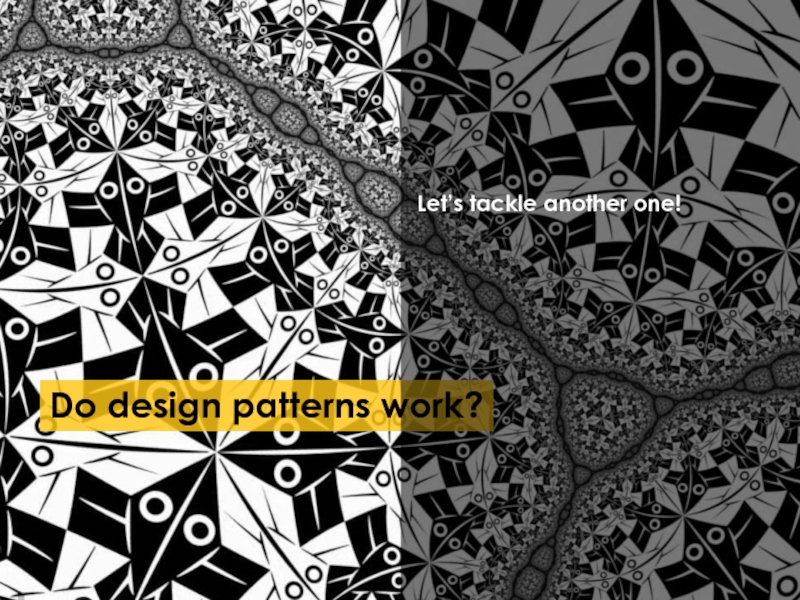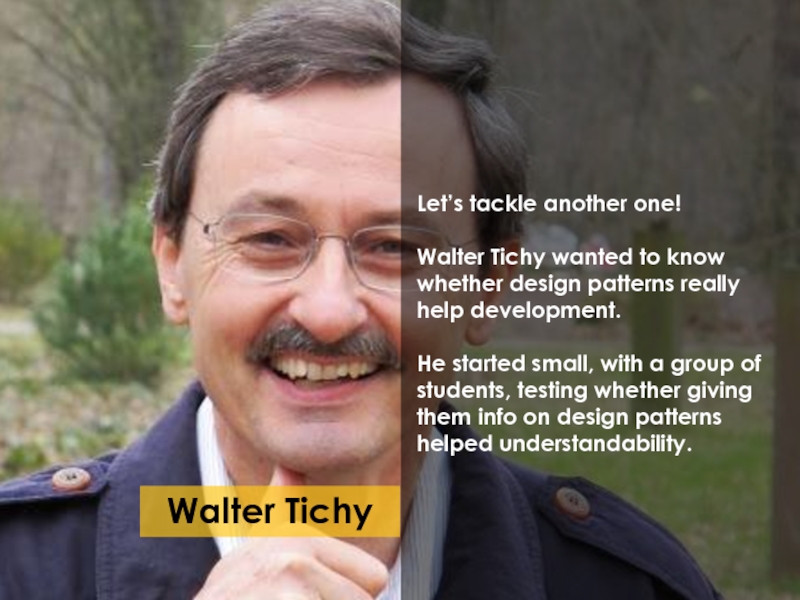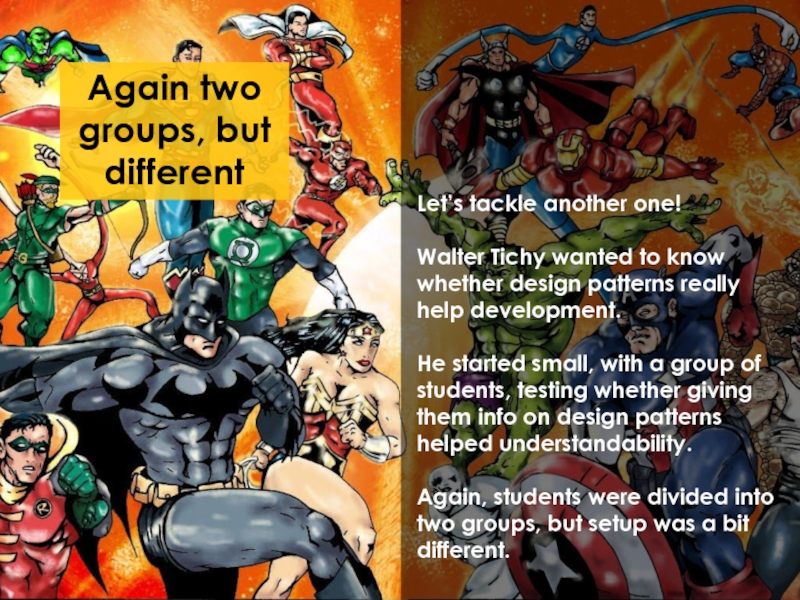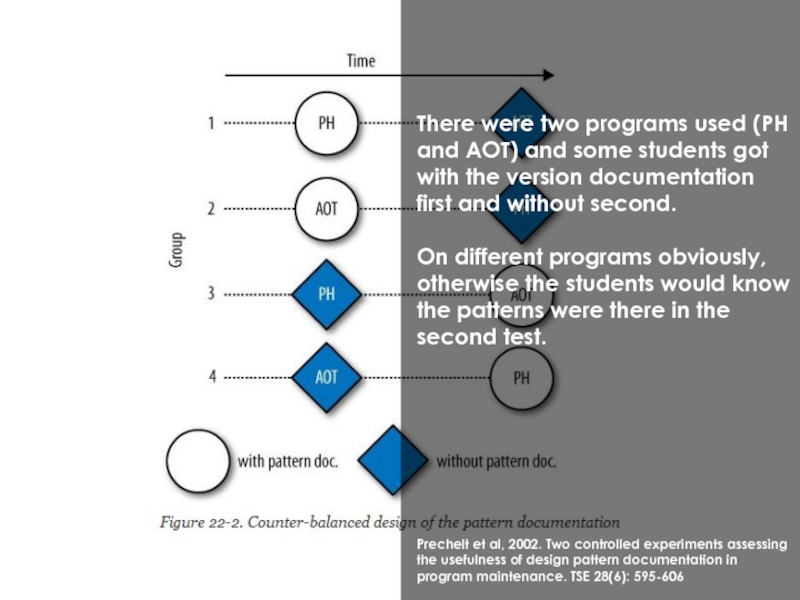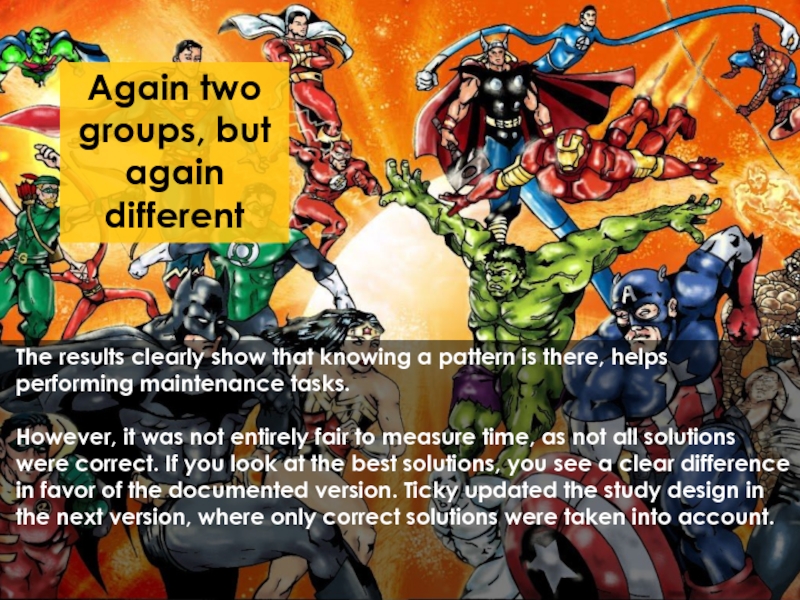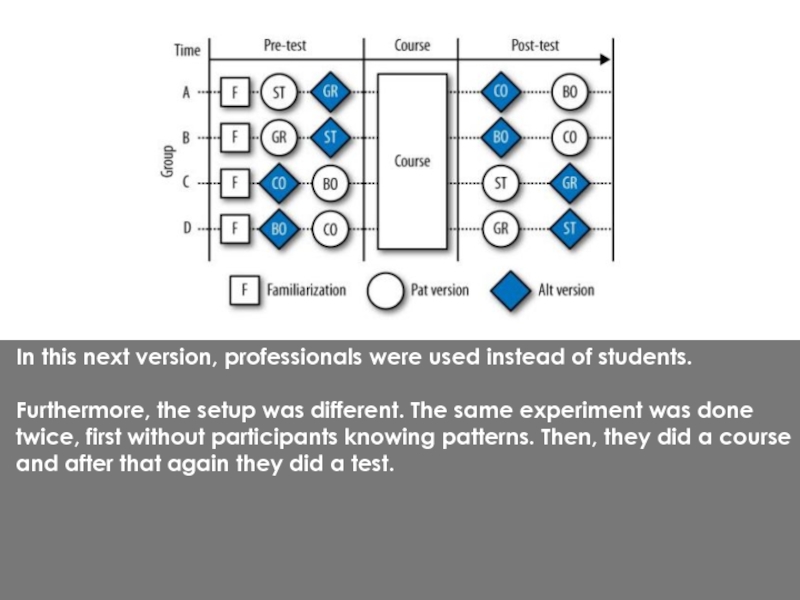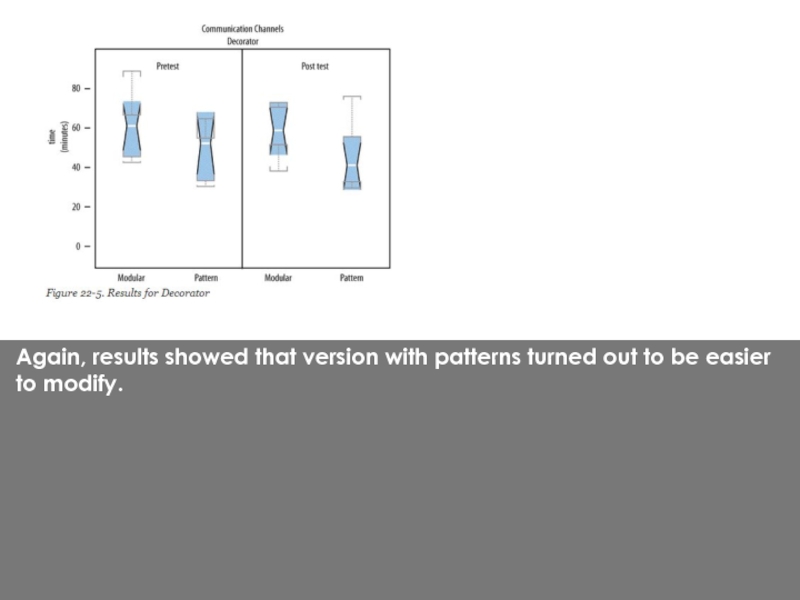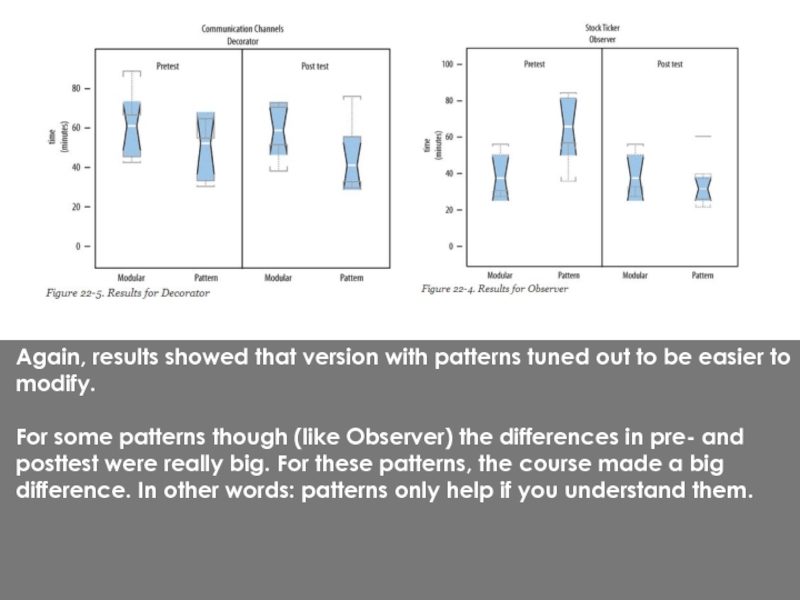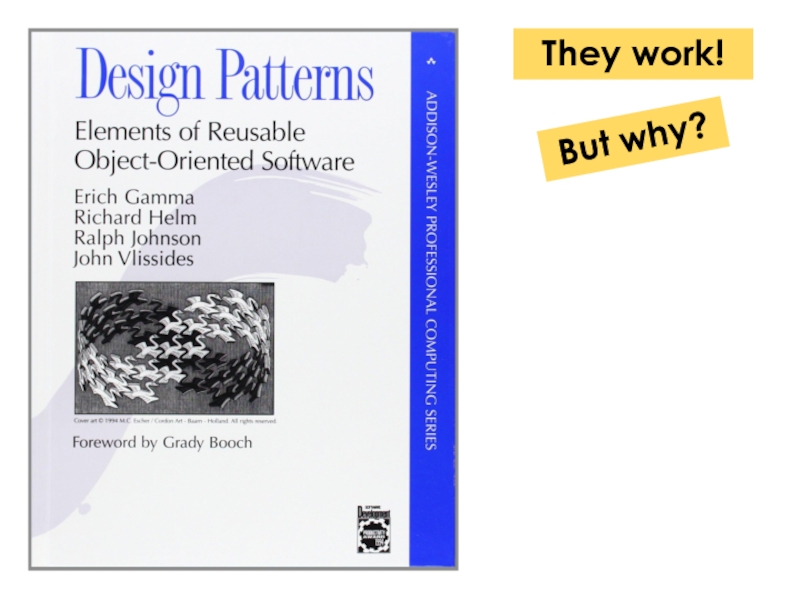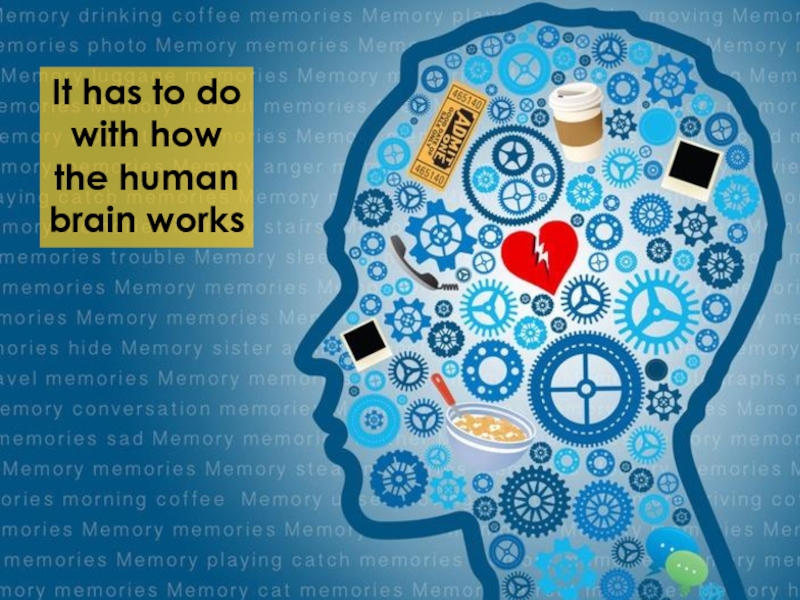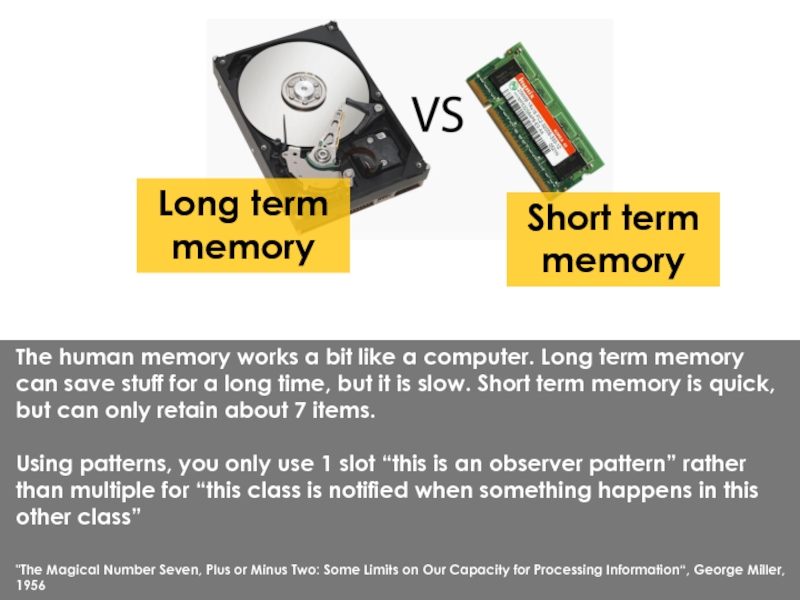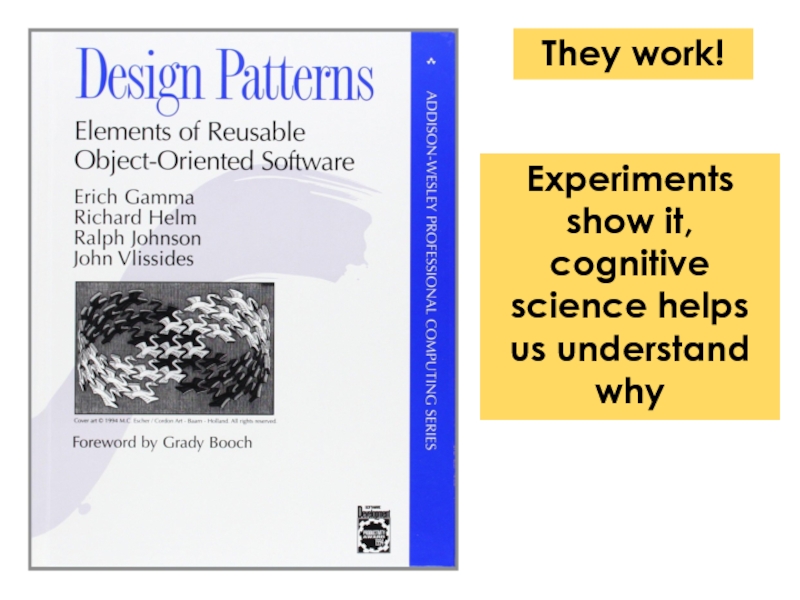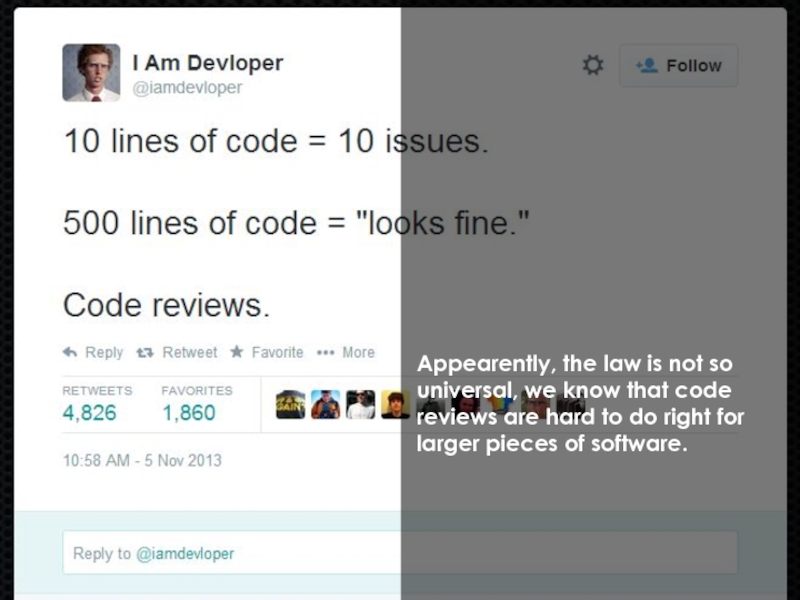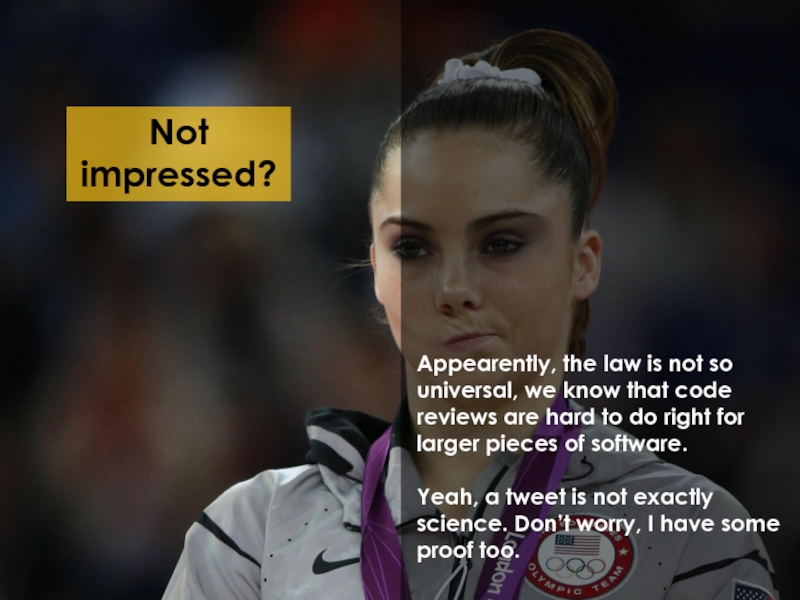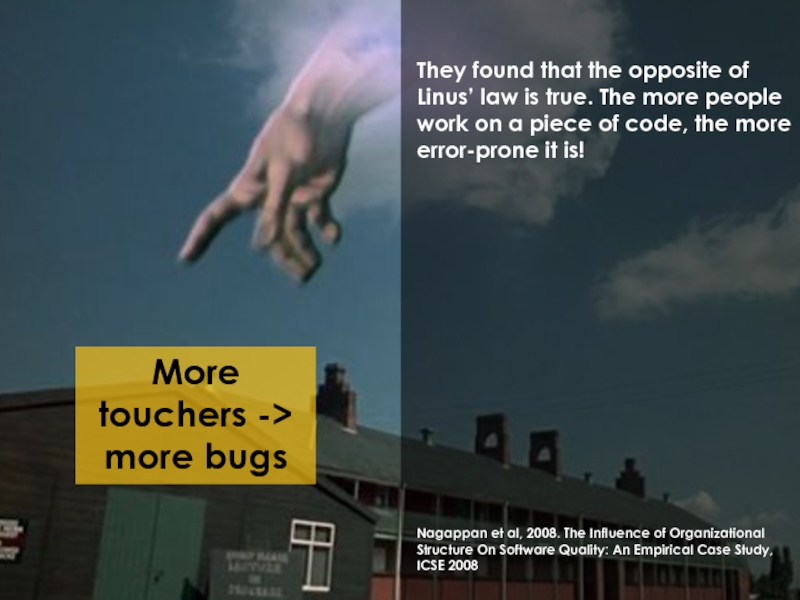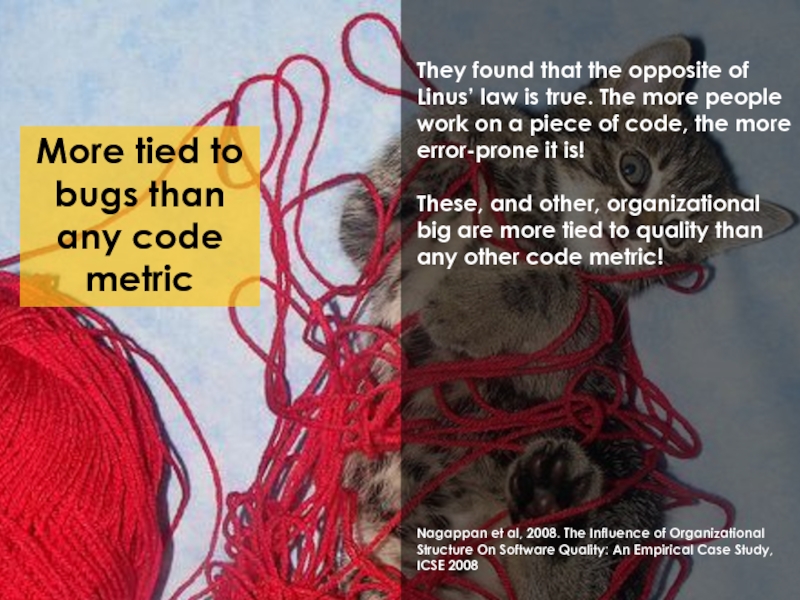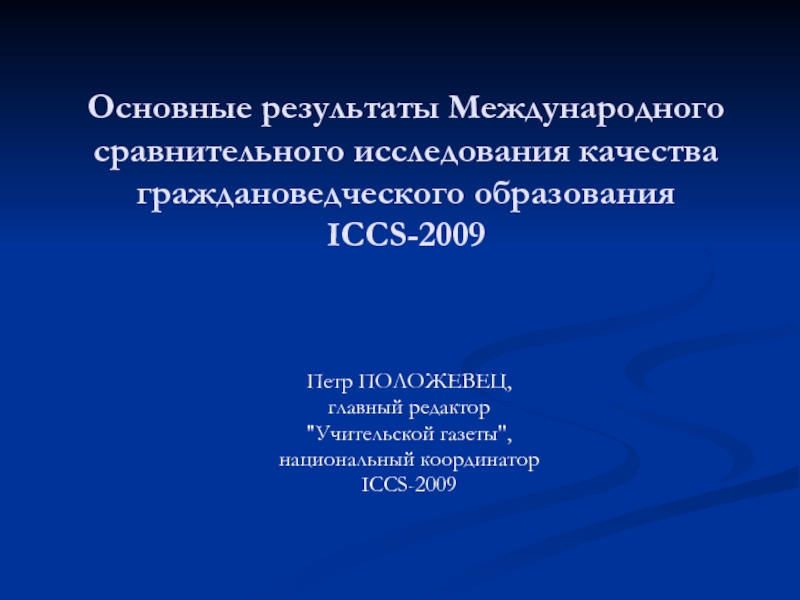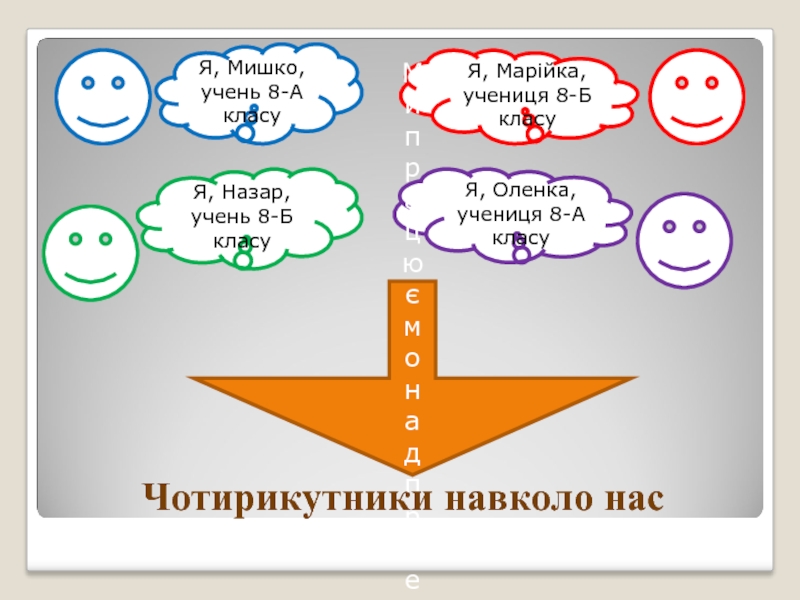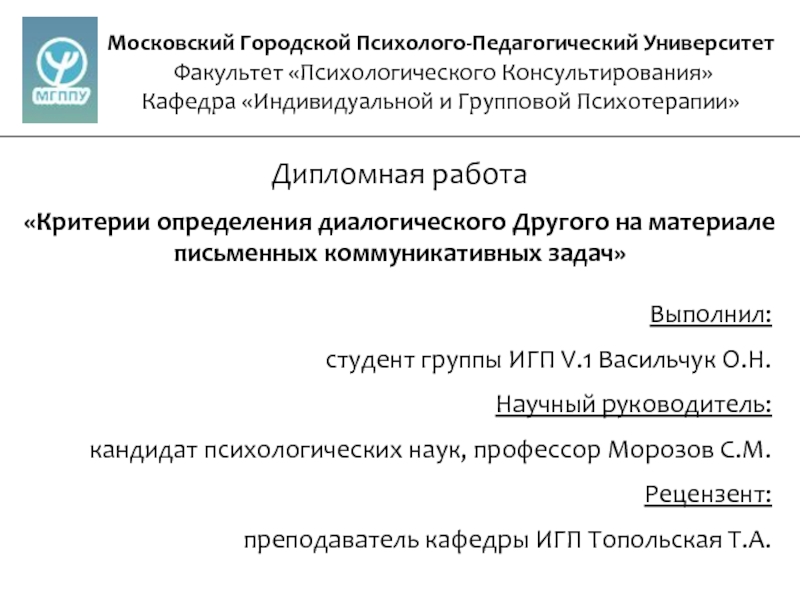- Главная
- Разное
- Дизайн
- Бизнес и предпринимательство
- Аналитика
- Образование
- Развлечения
- Красота и здоровье
- Финансы
- Государство
- Путешествия
- Спорт
- Недвижимость
- Армия
- Графика
- Культурология
- Еда и кулинария
- Лингвистика
- Английский язык
- Астрономия
- Алгебра
- Биология
- География
- Детские презентации
- Информатика
- История
- Литература
- Маркетинг
- Математика
- Медицина
- Менеджмент
- Музыка
- МХК
- Немецкий язык
- ОБЖ
- Обществознание
- Окружающий мир
- Педагогика
- Русский язык
- Технология
- Физика
- Философия
- Химия
- Шаблоны, картинки для презентаций
- Экология
- Экономика
- Юриспруденция
Felienne Delft University of Technology презентация
Содержание
- 1. Felienne Delft University of Technology
- 2. Felienne Delft University of Technology (@felienne) Putting
- 3. We all love science, right?
- 4. We love ‘crazy’
- 5. We love ‘crazy’
- 6. What is science?
- 7. What programming language is the best?
- 8. You expect
- 9. You get interpreted >> compiled
- 10. State of the debate is not so scientific
- 11. Idea: ask people But,
- 12. Researchers at Berkeley have conducted a
- 13. 13.000 responses Researchers at Berkeley have
- 14. They founds loads of interesting facts,
- 15. They founds loads of interesting facts,
- 16. They founds loads of interesting facts,
- 17. What correlates most with enjoyment? Meyerovich
- 18. Expressiveness Meyerovich and Rabkin also looked
- 19. Could we measure it? Meyerovich and
- 20. Danny Berkholz, researcher at RedMonk came up
- 21. In the graph, the thick line indicates
- 23. In the graph, the thick line indicates
- 24. Loads of interesting things to see here.
- 25. Loads of interesting things to see here.
- 26. Loads of interesting things to see here.
- 27. Another interesting fact came out of
- 28. Programmers don’t really believe in static typing
- 29. Programmers don’t really believe in static typing
- 30. Programmers don’t really believe in static typing
- 31. Could we measure it?
- 32. Stefan Hanenberg Static versus dynamic, does
- 33. Two groups Stefan Hanenberg tried to
- 34. Dynamic lover Legendary opponent
- 35. But what about type casting?
- 36. It does not really matter But what
- 37. I’m sure I can fix type errors just as quickly
- 38. I’m sure I can fix type errors just as quickly Not even close
- 39. I’m sure I can fix type errors
- 40. I’m sure I can fix type errors
- 41. But… my dynamically typed APIs, they must be quicker to use
- 42. But… my dynamically typed APIs, they must be quicker to use No
- 43. I’ll document the APIs!
- 44. I’ll document the APIs! Won’t help!
- 45. I’ll use a better IDE!
- 46. Won’t help! I’ll use a better IDE!
- 47. Stefan Hanenberg It looks like (Java-like)
- 48. Do design patterns work?
- 49. Walter Tichy
- 50. Again two groups, but different
- 51. There were two
- 52. The results clearly show that knowing a
- 53. Again two groups, but again different The
- 54. In this next version, professionals were used
- 55. Again, results showed that version with patterns
- 56. Again, results showed that version with patterns
- 57. They work! But why?
- 58. It has to do with how the human brain works
- 59. Long term memory Short term memory The
- 60. They work! Experiments show it, cognitive science helps us understand why
- 61. Does Linus’ Law’ hold?
- 62. Given enough eyeballs, all bugs are shallow Does Linus’ Law’ hold?
- 64. Not impressed?
- 65. Researcher at Microsoft research published
- 66. They found that the opposite
- 67. More tied to bugs than any code
- 68. They found that the opposite
- 69. Putting the science in computer science
Слайд 1Felienne
Delft University of Technology
(@felienne)
Putting the science
in computer science
This slidedeck is
c
Слайд 2Felienne
Delft University of Technology
(@felienne)
Putting the science
in computer science
This slidedeck is
Слайд 4
We love ‘crazy’ science like this
http://the-toast.net/2014/02/06/linguist-explains-grammar-doge-wow/
Слайд 5
We love ‘crazy’ science like this
And this
http://allthingslinguistic.com/post/56280475132/i-can-has-thesis-a-linguistic-analysis-of-lolspeak
Слайд 7What programming
language is the best?
So, with science, we should be
Слайд 9You get
interpreted >>
compiled
JavaScript 4 ever!
Pure is the
only true path
C++ is
PHP sucks
Pascal is very elegant
You’d expect computer scientists to somewhat respectfully debate this.
Unfortunately, reality is more like this.
Слайд 11Idea: ask people
But, some people are trying! In this slidedeck I’ll
Слайд 12
Researchers at Berkeley have conducted a very exptensive survey on programming
http://www.eecs.berkeley.edu/~lmeyerov/projects/socioplt/viz/index.html
Слайд 1313.000 responses
Researchers at Berkeley have conducted a very extensive survey on
They collected 13.000 (!) responses, and their entire dataset is explorable online
http://www.eecs.berkeley.edu/~lmeyerov/projects/socioplt/viz/index.html
Слайд 14
They founds loads of interesting facts, I really encourage you to
My favorite is this graph, factors for choosing a particular language.
http://www.eecs.berkeley.edu/~lmeyerov/projects/socioplt/viz/index.html
Слайд 15
They founds loads of interesting facts, I really encourage you to
My favorite is this graph, factors for choosing a particular language.
Notice that the first factor that has something to do with the language is on the 6th place.
http://www.eecs.berkeley.edu/~lmeyerov/projects/socioplt/viz/index.html
Слайд 16
They founds loads of interesting facts, I really encourage you to
My favorite is this graph, factors for choosing a particular language.
Notice that the first factor that has something to do with the language is on the 6th place.
Two other languages are on the 8th and 12th place.
http://www.eecs.berkeley.edu/~lmeyerov/projects/socioplt/viz/index.html
Слайд 17What correlates most with enjoyment?
Meyerovich and Rabkin also looked into what
Want to guess?
Слайд 18Expressiveness
Meyerovich and Rabkin also looked into what makes programmers happy.
Want to
It’s expressiveness. That correlates with enjoyment most.
Слайд 19Could we measure it?
Meyerovich and Rabkin also looked into what makes
Want to guess?
It’s expressiveness. That correlates with enjoyment most.
So what language is most expressive? Is there a way to measure this?
Слайд 20Danny Berkholz, researcher at RedMonk came up with a way to
His assumption is that a commit has more or less the same ‘value’ in terms of functionality over different languages.
http://redmonk.com/dberkholz/2013/03/25/programming-languages-ranked-by-expressiveness/
Слайд 21In the graph, the thick line indicates the median, the box
http://redmonk.com/dberkholz/2013/03/25/programming-languages-ranked-by-expressiveness/
Слайд 23In the graph, the thick line indicates the median, the box
Let’s have a look at what language goes where!
http://redmonk.com/dberkholz/2013/03/25/programming-languages-ranked-by-expressiveness/
Слайд 24Loads of interesting things to see here. For instance, all the
Слайд 25Loads of interesting things to see here. For instance, all the
Interesting is also the huge difference between CoffeeScipt and JavaScript, while this might be due to the fact that CoffeeScript is young and commits are thus quite ‘clean’.
Слайд 26Loads of interesting things to see here. For instance, all the
Interesting is also the huge difference between CoffeeScipt and JavaScript, while this might be due to the fact that CoffeeScript is young and commits are thus quite ‘clean’.
Finally, unsurprising, functional (Haskell, F#, Lisps) = expressiveness.
Слайд 32Stefan Hanenberg
Static versus dynamic, does it really matter?
Let’s experiment!
Stefan Hanenberg
Слайд 33Two groups
Stefan Hanenberg tried to measure whether static typing has any
He divided a group of students into two groups, one with a type system and one without, and had them perform small maintainability tasks.
Let’s summarize his results... Star Wars style!
Слайд 34Dynamic lover
Legendary opponent
On the left, we have the lover of dynamically
On the right is his static opponent.
Let’s see how this turns out.
Слайд 35But what about type casting?
One of the arguments that dynamic proponents
Слайд 36It does not really matter
But what about type casting?
One of the
It does not really matter. For programs over 10 LOC, you are not slower if you have to do type casting.
Слайд 39I’m sure I can fix type errors just as quickly
Not even
The differences are HUGE!
Blue bar = Groovy, Green = Java
Vertical axis = time
Слайд 40I’m sure I can fix type errors just as quickly
Not even
The differences are HUGE!
Blue bar = Groovy, Green = Java
Vertical axis = time
In some cases, the run-time errors occurred at the same line where the compiler found a type error.
Слайд 47Stefan Hanenberg
It looks like (Java-like) static type systems
really help in
While more research is needed, we might conclude this.
Слайд 49Walter Tichy
Let’s tackle another one!
Walter Tichy wanted to know whether design
He started small, with a group of students, testing whether giving them info on design patterns helped understandability.
Слайд 50Again two groups, but different
Let’s tackle another one!
Walter Tichy wanted to
He started small, with a group of students, testing whether giving them info on design patterns helped understandability.
Again, students were divided into two groups, but setup was a bit different.
Слайд 51
There were two programs used (PH and AOT) and some students
On different programs obviously, otherwise the students would know the patterns were there in the second test.
Prechelt et al, 2002. Two controlled experiments assessing the usefulness of design pattern documentation in program maintenance. TSE 28(6): 595-606
Слайд 52The results clearly show that knowing a pattern is there, helps
However, it was not entirely fair to measure time, as not all solutions were correct. If you look at the best solutions, you see a clear difference in favor of the documented version. Ticky updated the study design in the next version, where only correct solutions were taken into account.
Слайд 53Again two groups, but again different
The results clearly show that knowing
However, it was not entirely fair to measure time, as not all solutions were correct. If you look at the best solutions, you see a clear difference in favor of the documented version. Ticky updated the study design in the next version, where only correct solutions were taken into account.
Слайд 54In this next version, professionals were used instead of students.
Furthermore, the
Слайд 56Again, results showed that version with patterns tuned out to be
For some patterns though (like Observer) the differences in pre- and posttest were really big. For these patterns, the course made a big difference. In other words: patterns only help if you understand them.
Слайд 59Long term memory
Short term memory
The human memory works a bit like
Using patterns, you only use 1 slot “this is an observer pattern” rather than multiple for “this class is notified when something happens in this other class”
"The Magical Number Seven, Plus or Minus Two: Some Limits on Our Capacity for Processing Information“, George Miller, 1956
Слайд 63
Appearently, the law is not so universal, we know that code
Слайд 64Not impressed?
Appearently, the law is not so universal, we know that
Yeah, a tweet is not exactly science. Don’t worry, I have some proof too.
Слайд 65
Researcher at Microsoft research published a study in which they connected
Nagappan et al, 2008. The Influence of Organizational Structure On Software Quality: An Empirical Case Study, ICSE 2008
Слайд 66
They found that the opposite of Linus’ law is true. The
Nagappan et al, 2008. The Influence of Organizational Structure On Software Quality: An Empirical Case Study, ICSE 2008
More touchers -> more bugs
Слайд 67More tied to bugs than any code metric
They found that the
These, and other, organizational big are more tied to quality than any other code metric!
Nagappan et al, 2008. The Influence of Organizational Structure On Software Quality: An Empirical Case Study, ICSE 2008
Слайд 68
They found that the opposite of Linus’ law is true. The
These, and other, organizational big are more tied to quality than any other code metric!
This means that if you want to predict future defects, the best you can do is look at the company!
Might be me, but I think that is surprising.
Nagappan et al, 2008. The Influence of Organizational Structure On Software Quality: An Empirical Case Study, ICSE 2008
Слайд 69Putting the science
in computer science
Felienne
Delft University of Technology
(@felienne)
That’s it! I
If you want to keep up, follow my blog where I regularly blog about the newest SE research.
